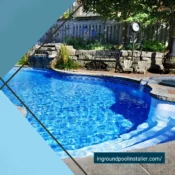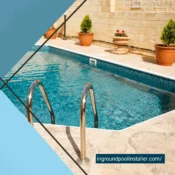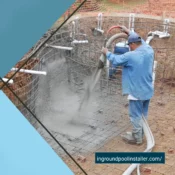Breaking Down the Pool Plumbing Process: Tips from an Expert Inground Pool Installer

Breaking Down the Pool Plumbing Process: Tips from an Expert Inground Pool Installer
Installing an inground pool installer is more than just digging a hole and filling it with water – it involves an intricate plumbing system that ensures water circulation, filtration, and heating work seamlessly. Proper pool plumbing is essential for maintaining water quality and preventing costly repairs down the line. With insights from expert pool installers, this guide will break down the pool plumbing process and provide tips to ensure a smooth installation.
1. Planning and Designing the Plumbing Layout
Before any pipes are laid, pool installers carefully plan the plumbing layout to ensure efficient water flow and minimize potential weak points. This involves mapping out the routes for suction lines, return lines, and additional features like waterfalls or jets.
- Suction Lines – These lines pull water from the pool to the pump and filter. The number and size of suction lines depend on the pool’s size and capacity.
- Return Lines – Once filtered, the clean water is returned to the pool through strategically placed return jets, ensuring even distribution.
- Tip: Proper spacing of return lines prevents "dead zones" where water stagnates, reducing algae growth.
2. Choosing the Right Materials
Durability is key in pool plumbing. Professional installers use high-grade PVC pipes, known for their strength, longevity, and resistance to corrosion. Flexible PVC is often used in areas that require bends and curves, while rigid PVC is preferred for straight runs.
- Example: Schedule 40 PVC is the industry standard for pool plumbing, but for high-pressure areas, Schedule 80 is recommended due to its thicker walls.
- Pro Tip: Use PVC primer and solvent cement to ensure leak-proof joints.
3. Installing the Main Drain, Skimmer, and Return Jets
The main drain and skimmer play vital roles in keeping the pool clean. The main drain, located at the bottom, removes debris that sinks, while the skimmer collects floating debris from the surface.
- Tip: Position the skimmer downwind to naturally direct floating debris towards it.
- Return jets should be placed to create a circular water movement, promoting efficient filtration.
4. Connecting to the Filtration and Heating Systems
Proper plumbing connections between the pool and filtration, heating, and chlorination systems are essential for maintaining water clarity and temperature. Valves are installed to control water flow and redirect it as needed.
- Example: A bypass valve allows you to regulate the flow through the heater, saving energy when heating isn’t required.
5. Pressure Testing and Leak Checks
Once the plumbing is in place, the system is pressure-tested to detect leaks or weak connections. This involves filling the pipes with water and pressurizing them to ensure they can handle the expected load.
- Pro Tip: Address even the smallest leaks immediately – they can escalate into major issues over time.
Proper pool plumbing is a crucial aspect of inground pool installer, ensuring smooth operation and longevity. By understanding the components and techniques involved, homeowners can feel confident in their investment. If you're planning a pool installation, working with an expert installer ensures that every detail – from suction lines to return jets – is handled with precision. Ready to take the plunge? Trust the professionals to create a pool that not only looks great but functions flawlessly.
All Categories
- Concrete
- Concrete
- Concrete pools
- Construction
- Custom Features and Add-ons
- Design
- Design
- Design
- Design & Construction
- Design and Planning
- Features & Customization
- Infinity edge
- inground pool
- inground pool builder
- inground pool installer
- Installation
- Installation Process
- Legal & Administrative
- Materials
- planning and design
- Pool Aesthetics and Customization
- Pool Design
- Pool Equipment
- Pool Features
- Pool Features
- Pool Installation Process
- Pool Materials
- Pool Materials
- Pool Types
- Project Planning
- Renovation
- Resurfacing
- top sights
- Types of Inground Pools
- Types of Inground Pools
- Types of Inground Pools
- Types of Inground Pools
- Water Treatment



